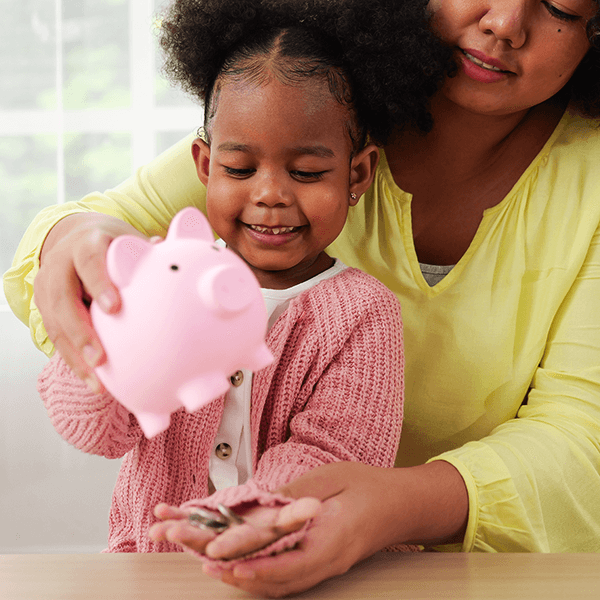Junior ISA: cash vs stocks and shares
When you open a junior ISA (JISA), you’ll need to choose between a cash JISA and a stocks and shares JISA.
Find out what these options mean, how they compare and what could be the best choice for you and your family.
What are junior ISAs?
JISAs are tax-efficient savings accounts for children. They can be opened by anyone with parental responsibility (a parent or legal guardian) for any child under the age of 18, as long as that child doesn’t have a child trust fund. The child must be under 16 to be eligible for a OneFamily Junior ISA.
Anyone can pay into a JISA, but the money will be locked in for the child, who will only be able to access it when they turn 18.
There are two types of JISA: cash and stocks and shares.
Stocks and shares junior ISAs
Stocks and shares JISAs are investment accounts for children. Money that is paid in is invested in the stock market instead of being held in cash. This has good potential for growth over the long term, but the value of stocks can go up or down which means your child may end up with less money than has been paid in.
Cash junior ISAs
Cash JISAs are savings accounts for children. The money you put in grows over time by building interest, just like with current accounts. This means your money is protected from changes in the stock market, but it could lose value if inflation goes up more than interest rates.
How do cash junior ISAs and stocks and shares junior ISAs compare?
When you’re opening a JISA for your child, you want to make sure you’re making the right choice for their future. We’ve put together a comparison of some of the key things to consider when choosing between a cash JISA and a stocks and shares JISA.
| Cash junior ISAs | Stocks and shares junior ISAs | |
|---|---|---|
| How do I open it? | Open it directly with a cash JISA provider. | Open it directly with a stocks and shares JISA provider. |
| How does it grow? | Grows by accumulating interest. Interest rates vary between providers. | Grows by investing in the stock market. There are a variety of fund options to choose from. |
| What are the risks? | Money may lose value over time, since inflation can be higher than interest rates. | Investments may lose value due to changes in the stock market. |
What are the alternatives to junior ISAs?
There are a few ways you can save for your child’s future without opening a cash JISA or a stocks and shares JISA for them.
- You can open a junior tax-exempt savings plan for them, which requires fixed monthly or yearly payments.
- You could put money away for them in your own ISA.
- You can dedicate a normal savings or current account to saving for your child.
You can read more about this on our children’s savings guide.
Weighing up your options
There are a few things worth keeping in mind if you’re thinking of opening either a cash JISA or a stocks and shares JISA for your child:
As they invest in the stock market, there is the possibility that your child could get back less than has been paid into a stocks and shares JISA.
However, they have good long-term growth potential when compared to cash JISAs, where your money is protected but could lose value over time due to inflation. In fact, in every 5-year period between 2000 and 2021, stocks and shares have out-grown interest rates.*

OneFamily Junior ISA
With our stocks and shares Junior ISA you can start investing from just £10 per month up to a maximum of £9,000 each year on behalf of a child. Anyone can pay in, and the child will gain access to the account once they are 18 years old.
Stocks and shares JISAs have good long-term growth potential, but the value of your investments can go up or down and your child could get back less money than you’ve put in.
*Source: Barclays GILT study 2023.

Find out more about junior ISAs
What would you like to do next?
Start saving today
Your kids deserve a head start. Invest in your children's future with our stocks and shares Junior ISA for tax-free savings.
Transfer a child trust fund or junior ISA
Transferring a child trust fund or junior ISA from another provider to OneFamily is simple and we don't charge you to do so.
Learn more about junior ISAs
Find out more about how a JISA can help you save for your child's future.
